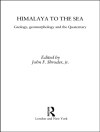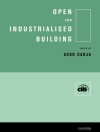Over the last decade, several large-scale United States and international programs have been initiated to incorporate advances in molecular and cellular biology, -omics technologies, analytical methods, bioinformatics, and computational tools and methods into the field of toxicology. Similar efforts are being pursued in the field of exposure science with the goals of obtaining more accurate and complete exposure data on individuals and populations for thousands of chemicals over the lifespan; predicting exposures from use data and chemical-property information; and translating exposures between test systems and humans.Using 21st Century Science to Improve Risk-Related Evaluations makes recommendations for integrating new scientific approaches into risk-based evaluations. This study considers the scientific advances that have occurred following the publication of the NRC reports Toxicity Testing in the 21st Century: A Vision and a Strategy and Exposure Science in the 21st Century: A Vision and a Strategy. Given the various ongoing lines of investigation and new data streams that have emerged, this publication proposes how best to integrate and use the emerging results in evaluating chemical risk. Using 21st Century Science to Improve Risk-Related Evaluations considers whether a new paradigm is needed for data validation, how to integrate the divergent data streams, how uncertainty might need to be characterized, and how best to communicate the new approaches so that they are understandable to various stakeholders.
Board on Environmental Studies and Toxicology & Committee on Incorporating 21st Century Science into Risk-Based Evaluations
Using 21st Century Science to Improve Risk-Related Evaluations [PDF ebook]
Using 21st Century Science to Improve Risk-Related Evaluations [PDF ebook]
购买此电子书可免费获赠一本!
语言 英语 ● 格式 PDF ● 网页 200 ● ISBN 9780309453493 ● 出版者 National Academies Press ● 发布时间 2017 ● 下载 3 时 ● 货币 EUR ● ID 7145290 ● 复制保护 Adobe DRM
需要具备DRM功能的电子书阅读器












